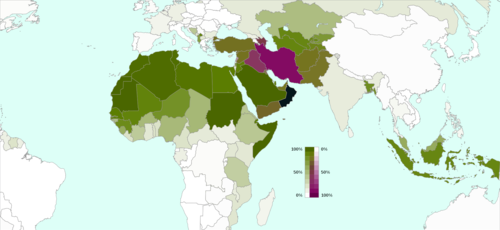| Part of a series on |
| Islam |
|---|
Islam is an Abrahamic monotheistic religion teaching that there is only one God (Allah) [1] and that Muhammad is His last Messenger. [2] [3]
Contents
- Beliefs
- Aqidah
- Prophets
- Scripture
- Denominational specifics
- Practice
- Denominational specifics 2
- Schools and branches
- Philosophy
- Theology
- Law
- Hadith
- The supernatural in Islam
- Islamic Legends
- History
- History of Islam by topic
- Society
- Places
- Culture
- Politics
- Muslim world
- People
- Key religious figures
- Denominational specifics 3
- List of Muslims by topic
- See also
- References
- External links
The following outline is provided as an overview of and topical guide to Islam.

















